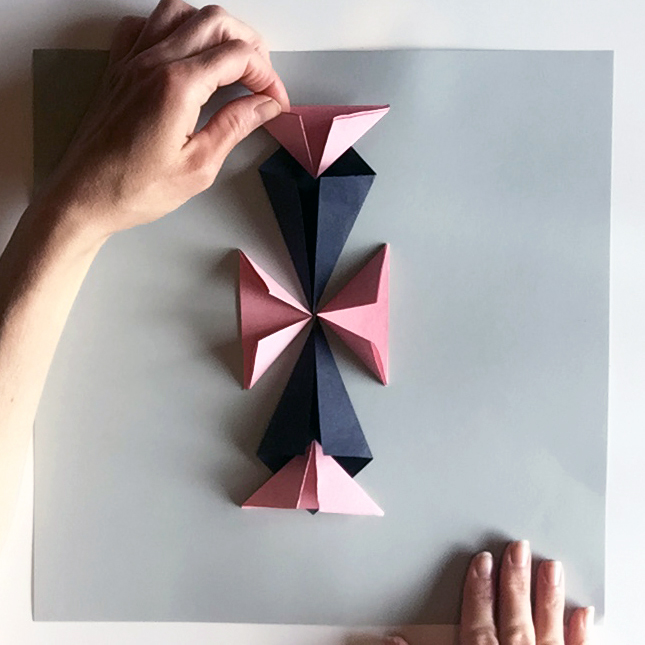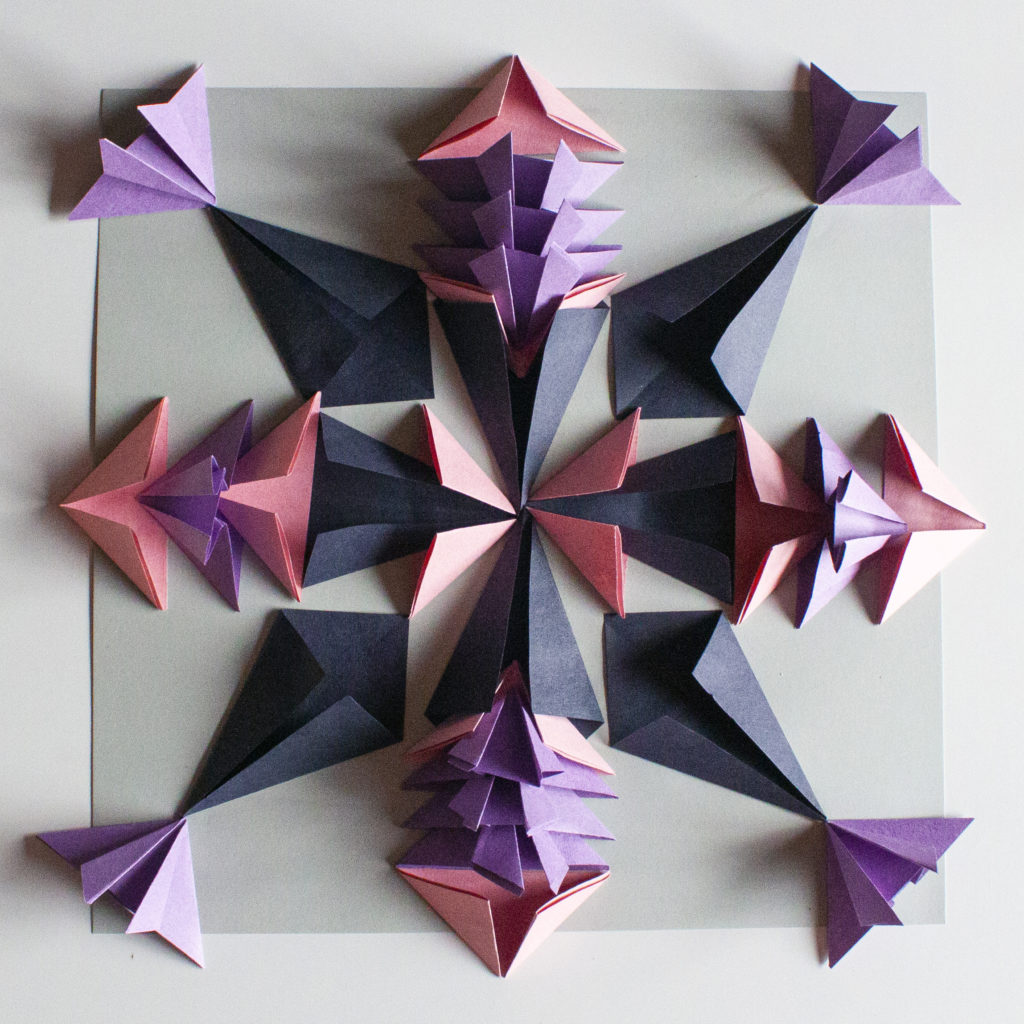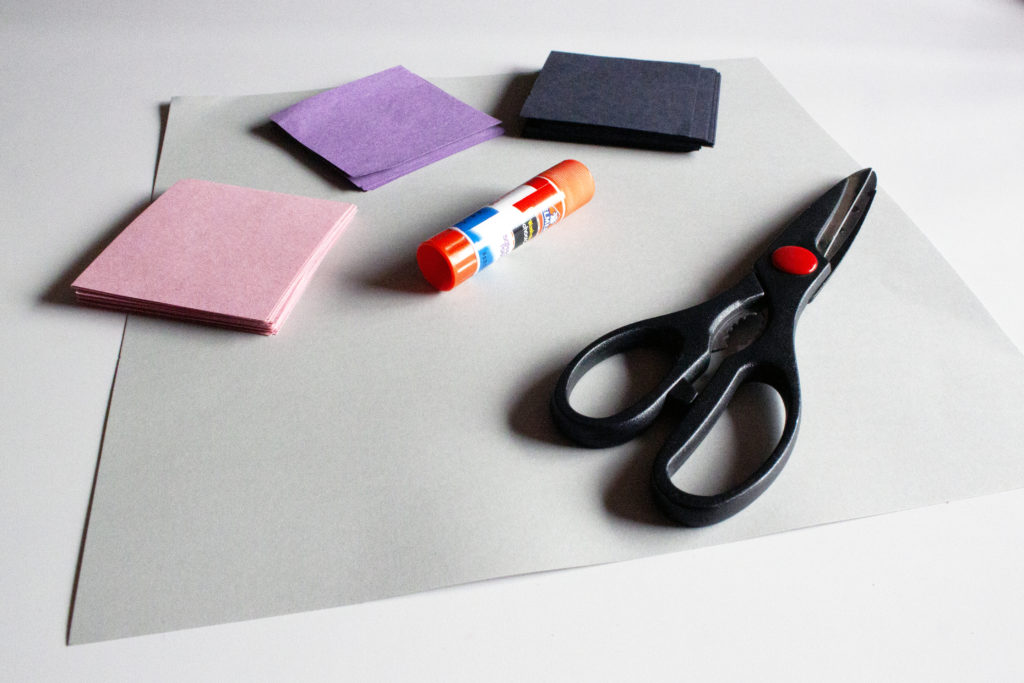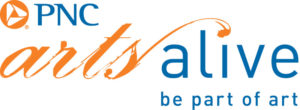Radial Symmetry Paper Relief Sculpture
Stuck at home and feeling the urge to be creative? Create a geometric design using colored paper! Geometric, radial symmetry designs are similar to those created in kaleidoscopes, with endless possibilities of design patterns, colors, and sizes.


Materials:
- Cardstock Paper, 12″ x 12″ inches
- Construction Paper, 3″ x 3″ inches
- Scissors
- Glue
Step 1: Cut a piece of paper into a square, equal on all sides: we suggested starting with 12″ x 12″ inches
Step 2 (optional): Fold the 12″ x 12″ paper diagonally, corner to corner, open, and repeat with the other two corners. Fold as many “guidelines” as desired to help create symmetry throughout the piece. Set aside after folding.
Step 3: Begin creating folds using the 3″ x 3″ paper. Three different folds are demonstrated in the video: hat fold, kite fold, and the samurai fold. We recommend making at least ten of each of the three different folds to start.
Step 4: Layout the folds onto the 12″ x 12″ paper and begin to create a symmetrical design along its folded lines.
Step 5: Glue each piece down to the 12″ x 12″ paper. Once the glue is dry, photograph your relief sculpture and share it with friends!
Ideas to take your paper relief sculpture to the next level:
- Make it look more like a snowflake by using colors such as blue and white.
- Turn your paper relief sculpture into a flower! Make a sunflower by using yellow, brown, and green paper. Attach pipe cleaner or a wooden dowel to create a stem.
- Create a reusable puzzle! To do this, do not glue down each folded piece. Instead, outline each shape with a marker onto the 12″ x 12″ paper. See if you can recreate the design following the outlined pattern.
- Draw designs onto the 3″ x 3″ papers using markers before folding them to create an even more mesmerizing and personalized relief sculpture!
Learning and Discussion Questions:
1. Experiment with complementary colors. Complementary colors are colors that are opposite of each other on the color wheel. Which complementary colors are your favorite?
A. Learn about the color wheel by watching this Youtube video.
B. Use symmetry to layout complementary colors. For example, if you have two orange and two blue on one half of the square, place two more of each color on the other half to balance it.
2. This project uses symmetry to create a relief sculpture. A sculpture is a three-dimensional object that can be seen on all sides when walked around. A relief sculpture is created on a flat surface with a design meant only to be seen from the front.
A. Watch this Youtube video to learn more about relief sculptures.
B. Sculptures come in many different forms. Read about the history of sculptures Here.
Thank you to our sponsor, PNC Arts Alive!, for helping to make this video possible!



